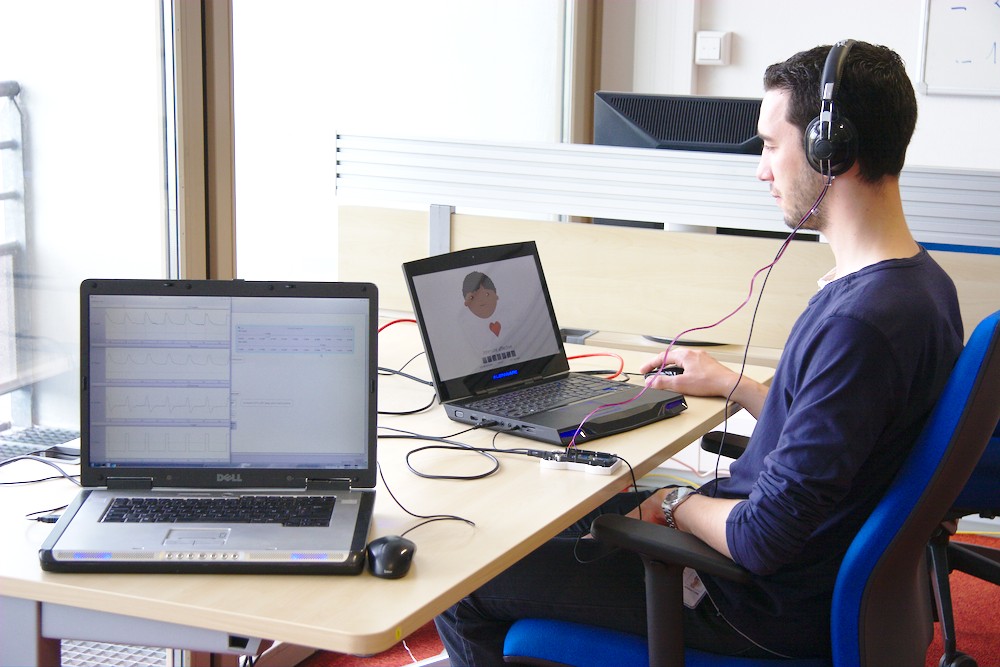Section: New Results
Physiological sensors: bridging human-computer interaction
Participants : Jérémy Frey, Dennis Wobrock, Aurélien Appriou, Christian Mühl, Fabien Lotte, Martin Hachet.
Physiological sensors are not limited to research and medical facilities anymore. They are getting more and more affordable and they become widely accessible to users, as denoted by the popularity of smartphone apps and wearables that track heart rate during fitness activities. Before long, we may see a wide range of sensors embedded into consumer electronic devices. This trend has already started with the arrival of "smartwatches" that could – among other things – detect users' heart beats covertly.
We anticipated this opportunity in order to increase engagement in human-computer interaction, more specifically in human-agent interaction. In [14] we demonstrated that we could increase the social presence of embodied agents – that is, of virtual beings – by simply mirroring the heart rate of users. The "similarity-attraction" effect induces positive emotions toward persons or things that look like us or react as we do. An agent that is associated to a heart beat at the same pace as the user is found more sympathetic. The "similarity-attraction" effect, applied to physiological computing, could help with little effort to improve the acceptance of embodied agents and robots by the general public. (See Figure 10 for setup).
|
Furthermore, we have taken advantage of physiological sensors in order to evaluate different sorts of human-computer interfaces prior to their release. First, we showed that we could reliably estimate the user's mental workload levels from his/her EEG signals, across different contexts involving different levels of social stress [10] . Then, based on those results, we used a combination of electrocardiography (measure of heart beats), galvanic skin response (measure of sweat on the skin) and electroencephalography (EEG, measure of brain activity) to assess the workload of users during 3D manipulation tasks. The first preliminary results seem to indicate that we might be able to discriminate the parts of the interaction that provokes a high cognitive stress, hence that needs to be improved. This work is in line with the evaluation of visual comfort. We presented earlier this year a pilot study documenting how different virtual depths could cause different levels of discomfort [17] , and how this discomfort translates to EEG activity.
Pervasive technologies and physiological computing may be a key component to bridge the gap that too often keeps dividing machines and general public. We believe that it'll help make computers more enjoyable and more usable.



